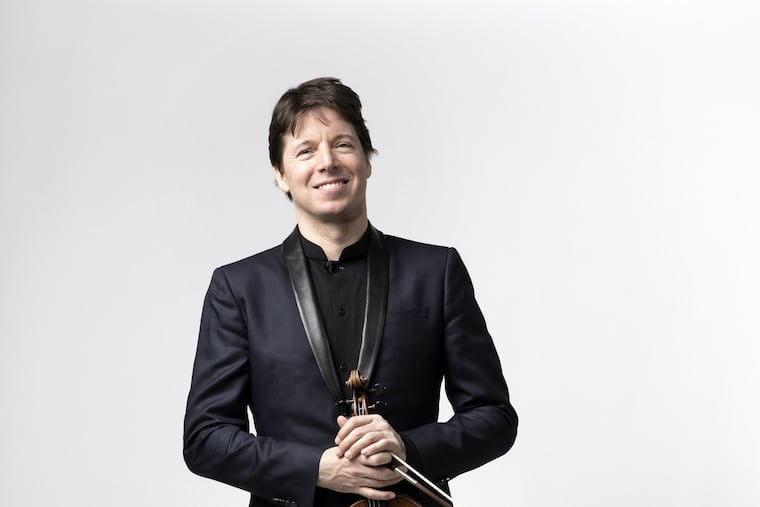Violinist Joshua Bell is soloist — and conductor of sorts — at the Philadelphia Orchestra
Joshua Bell has arrived at the Philadelphia Orchestra as “leader and soloist” in the current run of Kimmel Center subscription concerts.

Some star violinists need something more to do than just being a star violinist. Joshua Bell, now 53, arrived at the Philadelphia Orchestra as “leader and soloist” in the current run of Kimmel Center subscription concerts. What did that mean?
As a soloist, he played Bruch’s Violin Concerto No. 1 and was leader (a conductor of sorts) in much else — Florence Price’s Adoration and Mendelssohn’s Symphony No. 4 (“Italian”)— never utilizing a podium or baton. These second careers inspire some eye-rolling in classical circles, but if this is conducting, it’s one of the best things that has happened to him.
The lack of usual conductor trappings telegraph that he’s presenting himself more as an orchestra colleague with extra decision-making responsibilities. The results gave vitality and ownership to performances on a 2012 tour stop in Philadelphia with London’s Academy of St. Martin in the Fields (that he has directed since 2011). Friday’s concert was more evolved, with him using the Philadelphia sonic muscle not as added upholstery but to intensify the music’s meaning.
This was a far more explorative musical world from Bell’s good, forthright 1980s Bruch recording. The opening seconds were full of mystery, making a more expansive framework for his violin entrance, which is one of the more famous in the concerto repertoire. Later, an often-buried surge of expression from the violas signal a performance that would find all manner of inner tension between the different sections of the orchestra. His violin playing didn’t suffer from divided attention since his conducting mainly took the form of setting the tempo and overall tone with his bow arm.
In mining every phrase for maximum emotional content, however, Bell neglected the concerto’s larger structure. Thus, climaxes didn’t quite have their usual impact. But Bell’s detailed examination suggested, in comparison, how more typical concerto accompaniments operate on various levels of autopilot. We only guessed at what we were missing.
Bell kept his violin on hand for Price’s short Adoration, a minor gem from this Chicago-based Black composer, dating from 1951, two years before her death. Though written originally for organ, it was heard here in a string orchestra version by Jim Gray, and seemed like a different piece. The organ version feels like a church-service interlude for moments of quiet contemplation. The orchestral version has a more secular sense of repose with more sensual harmonies.
The Mendelssohn symphony, which Bell conducted with both hands but still no podium or baton, was its tidy extroverted self with a particularly energized final movement. He conducted from memory. That’s dedication.
The program is repeated Saturday, November 20, at 8 at the Kimmel Center. Tickets: $57-$169. Information: 215.893.1999 or www.philorch.org.